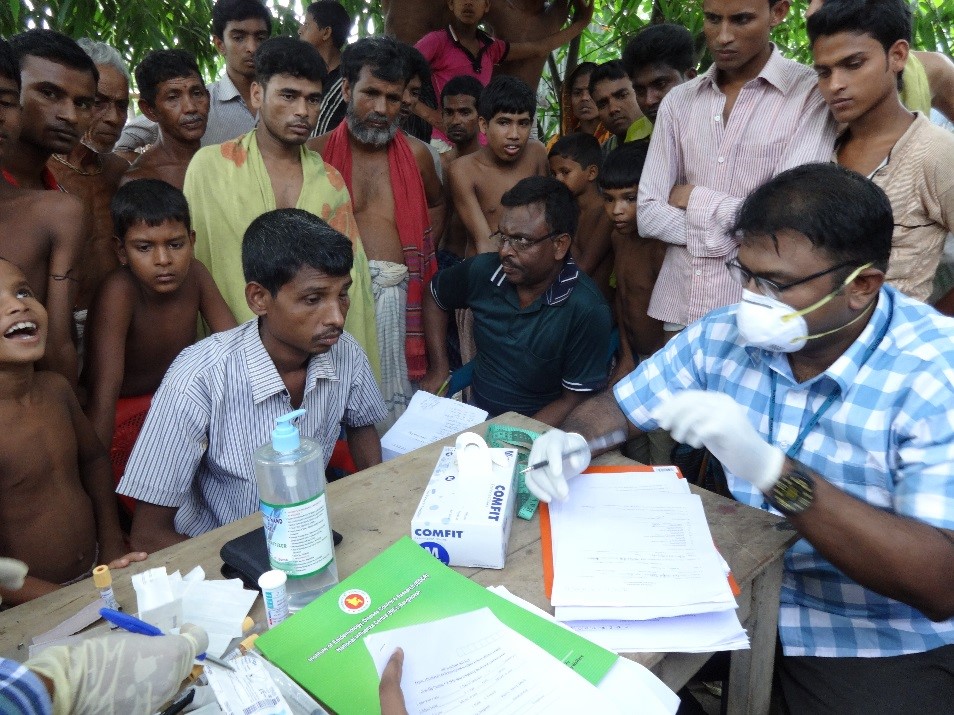
New Delhi: New data released by the World Health Organisation shows a decrease of TB cases in India by 50,000 since 2017. However, the country is still the world leader in TB cases, with an enormous 2.69 million patients, which amounts to 27% of the world’s patients.
The small decline in TB cases between 2017 and 2018 in India is in line with the global trend. The notification of TB cases in India has also increased, which is a positive development. However, while the decrease in TB cases and its rate in India is small and slow, deaths because of the disease have increased.
According to the WHO’s Global TB Report 2019, India had 2.69 million patients in 2018. In 2017, the number was 2.74 million cases. The drop of 50,000 patients is a 1.8% decline. The incidence of TB cases also dropped from 204 per 100,000 people in 2017 to 199 in 2018. The number of drug-resistant TB cases has also fallen, but by a mere 5,000 people. The current number of people with drug-resistant TB in India is still large at 1.3 lakh in 2018.
While the decline itself is good, the percentage of decline in comparison with the enormousness of India’s actual TB burden of 2.69 million people, indicates that India’s project of TB control is slow and the task at hand is large.
The notification of TB cases in India has increased. This is good news considering that figures for India’s TB burden were revised and increased a few years ago due to the phenomenon of India’s “missing millions,” where TB patients were being treated in the private sector or not receiving treatment at all. These cases were not being tracked by the Indian government.
But even then, at least 5.3 lakh TB patients could be missing from the government’s surveillance. While 2.69 million people are estimated to have TB as per the new report, only 2.1 million are notified.
Also Read: India Looks to Expand TB Programme With New Drug Bedaquiline
On the issue of notification, the WHO notes: “Most of the increase in global notifications of TB cases since 2013 is explained by trends in India and Indonesia, the two countries that rank first and third worldwide in terms of estimated incident cases per year. In India, notifications of new cases rose from 1.2 million to 2.0 million between 2013 and 2018 (+60%).”
India is among the eight countries which account for two-thirds of the global TB burden. But India is the only country where TB cases are in two-digit percentage points of the global count. While India is responsible for 27% of world’s TB cases, the other seven countries (China, Indonesia, Philippines, Pakistan, Nigeria, Bangladesh and South Africa) all contribute between 3% to 9%. In total, 30 countries, including these eight, account for 87% of the world’s TB cases.
Deaths from TB increase
While the number of TB cases fell by 50,000 between 2017 and 2018, the number of deaths from TB increased by 30,000. In 2018, 4.4 lakh people died from TB and the corresponding number was 4.1 lakh in 2017.
A reason for the rising number could be that a large number of TB patients in India don’t get treatment. The Global TB Report says only 74% of Indian TB patients are able to get treatment. Many TB patients are not notified and thus are not being tracked by the government’s TB programme. This also means they could be getting incorrect treatment or maybe no treatment at all. This also could be a reason for the deaths.
The global report says that among the 30 countries with a high burden of multi drug-resistant TB patients, the success rate of treatment was 50% or lower in India. In India, two reasons for the low success rates were high rates of death and loss to follow-up (19% and 19%), says the WHO.

